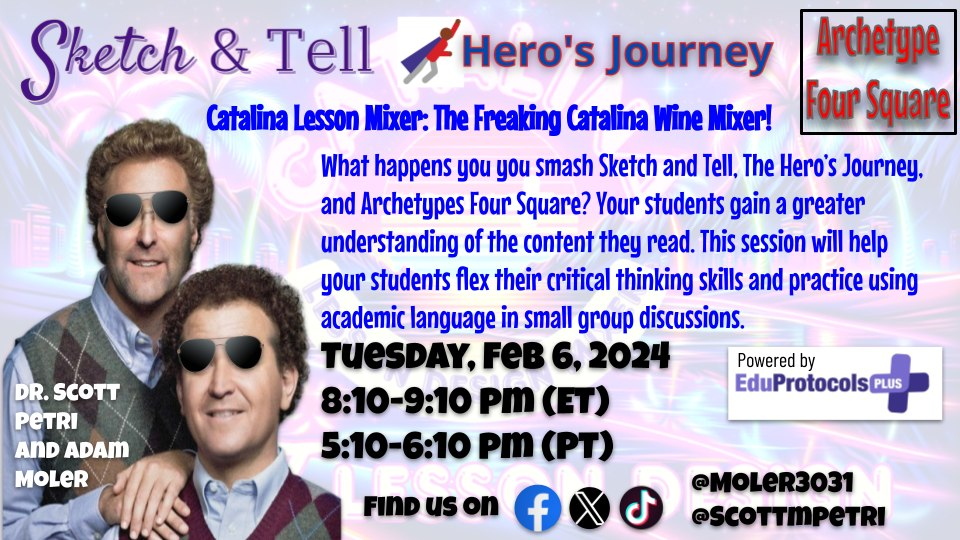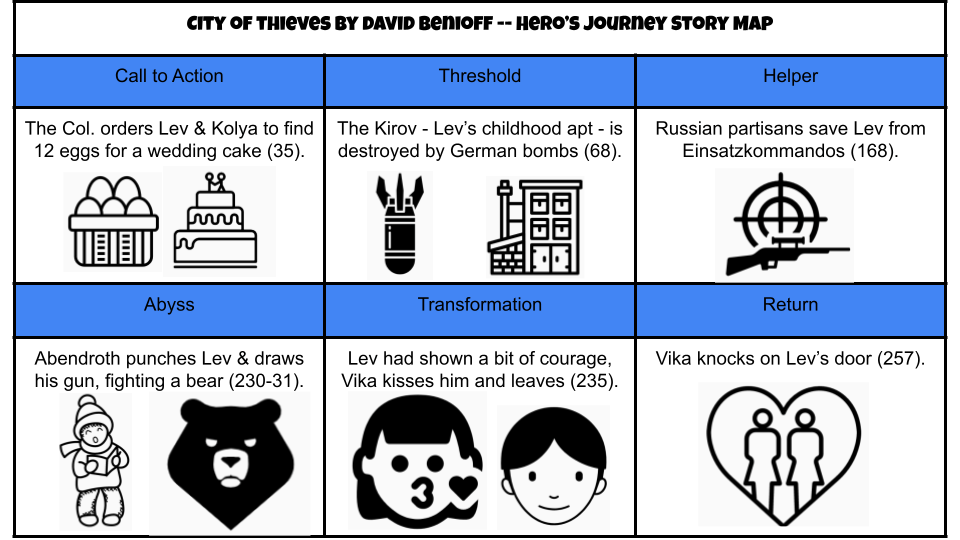
Adam Moler and I had a ball presenting together during the Catalina Lesson Design Mixer last week. Adam truly excels at simplifying pedagogy and combines it with an instinctive gift for self-reflection at a depth that I am incapable of. Working with him has helped me grow as a teacher in soooo many ways. Our friendship provides a clear example of how EduProtocols gives teachers a common language to discuss instructional practices and helps us focus on identifying instructional misconceptions together. I wish more teachers had access to a thought partner like Adam.

Our first session was on the classic CyberSandwich. This simple think-pair-share EduProtocol helps teachers monitor reading comprehension and allows students to practice note-taking, and then share what they thought was important with a peer. Teachers benefit from seeing the same EP used by teachers in different subjects and grade levels. Adam provided numerous examples in his presentation.
In our second session, we presented a smashup of the Hero’s Journey and Archetypes with Sketch and Tell. These frameworks help students classify and organize components of a historical event into mental models for higher levels of understanding.

The Hero’s Journey Eduprotocol applies a student’s historical knowledge to situations, which can be framed as the call to action, threshold, helper, abyss, transformation, and return. Almost every historical event or unit can be filtered through these lenses. Once teachers are familiar with the framework, they will see these patterns everywhere.

These frameworks are a good way for teachers to collaborate on interdisciplinary projects. A science teacher can the life cycle of a disease via the Hero’s Journey.

An ELA teacher can partner with a History teacher in working with City of Thieves by David Benioff, a novel on the siege of Leningrad told from the POV of a starving Russian in WWII.

There is a rich body of literature that examines the use and efficacy of mental models in education. A mental model is a visual representation of how something works. Mental models help us understand complex thinking. According to visible learning researcher John Hattie, conceptual change programs have a .99 effect size. This means that teachers who use these strategies consistently can expect to see more than two years of academic growth with their students.

If you would like to learn more about using The Hero’s Journey EduProtocol join us this Thursday, February 15th on The Social Studies Show on EduProtocols Plus at 9pm ET/6pm PT. We will talk about how to smart start with television commercials before diving into historical eras. Come and share how you get your students excited about comparing actions and events over different periods of time.
